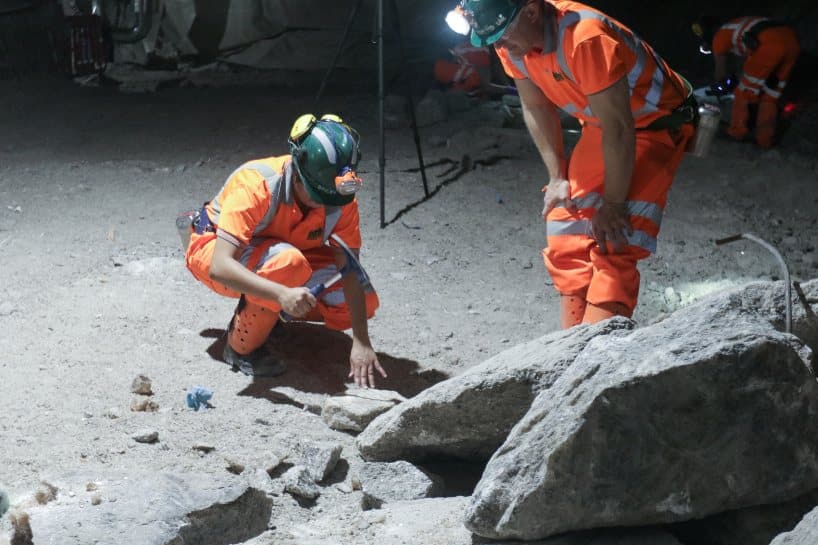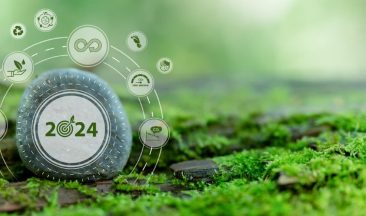A unique collaboration with NASA at ICL England’s Boulby mine is promoting the research of Mars. In a special lab, one kilometer underground, tools are being developed to help explore the red planet in the future.
From above, who would believe that this ordinary-looking North Yorkshire mine owned by ICL UK hides some amazing secrets some 1100 meters below the surface?
Aside from being the world’s only producer of Polysulphate, an innovative organic fertilizer, we find deep down below the surface of this ICL Polysulphate UK mine, a laboratory complex that houses some of the most sophisticated space exploration tools around and identical to the surface terrain of Mars.

Why ICL Boulby?
But why here in North Yorkshire, between Saltburn and Whitby on the North East coast of England and on the edge of the North Yorkshire Moors, so far removed from NASA or any other space agencies actively investigating the Red Planet?
Based on the depth and unique topography of the bottom of the mine, a unique multi-disciplinary deep underground science facility is a collaboration between ICL and among others, NASA, the European Space Agency (ESA), and the UK’s Science & Technology Facilities Council (STFC), which allows researchers to simulate a surrounding similar to that of Mars.
The laboratory complex is used for testing tools and equipment to determine their suitability for use on Mars, which may later be used on the surface of the planet.
Massive 4000 Cubic Meters Underground Lab
The science support facilities at Boulby currently include a 4,000m3 underground laboratory for ultra-low background projects with fully supported experimental areas operated at cleanroom standards.
With a footprint of 1,600m2, the laboratory has power, internet, 5T and 10T lifting capacity, along with air conditioning and filtration. In addition, Boulby also operates a 3,000m3 Outside Experimental Area (OEA) in a nearby bare salt cavern for studies requiring supported access to the deep underground environment and geology.

Studies underway at Boulby Mars Analogue laboratory range from the search for Dark Matter in the Universe, to studies of geology and geophysics, climate, the environment, life in extreme environments on Earth and beyond.
With a small team that are based on-site, the facility supports the work of over 70 scientists from 20 universities and research institutes in the UK and overseas.
Mars Analogue Laboratory
The amazing advancements in space research over the past few years have been accelerated by technological developments which allow us to get a little bit closer to faraway planets so that we can study them more extensively.
One of the most fascinating of those planets is Mars, which scientists all over the world are looking to in the hope of finding out whether human life could at one point be sustained on it.
This collaboration between ICL and NASA houses the aptly named the Mars Analogue Laboratory because of its replication of the Martian planet’s surface.
The lab has been in existence for 20 years. In the past few years, research was expanded widely to include the study of life in extreme environments on Earth and beyond it.
Inhospitable Mars
Overall, Mars is a cold rocky planet with an average global temperature of -26 degrees C and has a much thinner atmosphere than Earth. With an atmospheric pressure of one-sixth of the pressure of Earth and an atmosphere 100 times less dense, the red planet doesn’t retain heat very long, causing temperatures to drop quickly.
The temperature on Mars right near the surface, in the path of the Sun, is going to be a lot warmer than if you were to raise even 1.5 meters up. More unbelievably there might be a 5-7 degree C temperature change between where your feet are and where your head is if you were standing on Mars.
To try and simulate Martian conditions, NASA uses the data collected by Curiosity, as well as collaborating with ICL’s Boulby mine in North England.
“Studies conducted here bring about the discovery of breakthrough products that ICL as a company can benefit from, such as the perfecting of tools that help analyze rocks and map rivers,” Professor Sean Paling, Director and Senior Scientist at the Boulby Underground Laboratory of ICL Boulby explains.
Because this is a collaborative project between ICL and the various agencies, research is done alongside the mine’s regular work without impacting operations. At the same time, researchers make use of the massive knowledge collected in the company about the mine’s unique geology. There have been many interesting discoveries in many areas, such as developments that will be implemented in the next voyage of the European Mars Rover or ExoMars.
You may also be interested in
The Dark Matter Riddle: Scientists Hope for a Breakthrough
One of the Quietest Places in the Universe
Everything gives off radiation, but the sun gives off the most. It bombards the Earth’s surface constantly, which makes it difficult to listen for very small signals. That’s why the ICL Boulby lab is below a kilometer of rock, which shields it from radiation and allows sensitive listening because it’s one of the quietest places in the universe.
Vast 1000 km Underground Network
Deep underneath ICL Boulby is a huge network of underground roadways and caverns with over 1,000 kms of the tunnel having been excavated since the beginning of mining operations in 1968. The salt and potash seams mined are left from the evaporation of an ancient sea some 250 million years ago.
Boulby has hosted deep underground science since the 1990s. The focus of early work was the search for Dark Matter, the ‘missing mass in the universe thought to be as yet unknown fundamental particles that only interact weakly with normal matter. Deep underground particle detectors designed to detect dark matter can be operated with vastly reduced levels of cosmic ray interference that would be experienced on the Earth’s surface.
Boulby – Home to the World’s First and Only Polysulphate Production
Aside from boasting sophisticated space laboratories, ICL’s Boulby mine decided to transition to mining Polysulphate, a mineral that is a sulfate of potassium, calcium, and magnesium, and an ideal all-in-one fertilizer containing additional natural macronutrients.
Polysulphate – Fully Organic Sustainable Fertilizer
In a world where populations continue to grow and the food demand consistently increases, it’s important to farm as efficiently and sustainably as possible. This is where Polysulphate, our new natural jewel, provides the answer.
ICL Boulby’s polysulphate mine is the world’s first and only producer of this unique mineral. This layer of 260 million-year-old rock occurs over 1000 meters below the North Sea off the coast of Yorkshire and lies about 160 meters below the potash seam.
Our geologists discovered the polysulphate layer during exploration when the existing potash began running out after 40 years of mining.
ICL Innovation and Environmental Commitment
ICL is a leading global specialty minerals company that creates impactful solutions for humanity’s sustainability challenges in the global food, agriculture, and industrial markets.
Our ICL Boulby UK mine has an impressive track record in responsibly operating the deepest mine in the U.K and the company is developing ways to ensure good stewardship of the mine whilst guaranteeing the continuation of the project for decades to come.
The Cherry on the Top is the impressive Mars Lab that is contributing untold information to space research and a possible alternative future human habitat!







